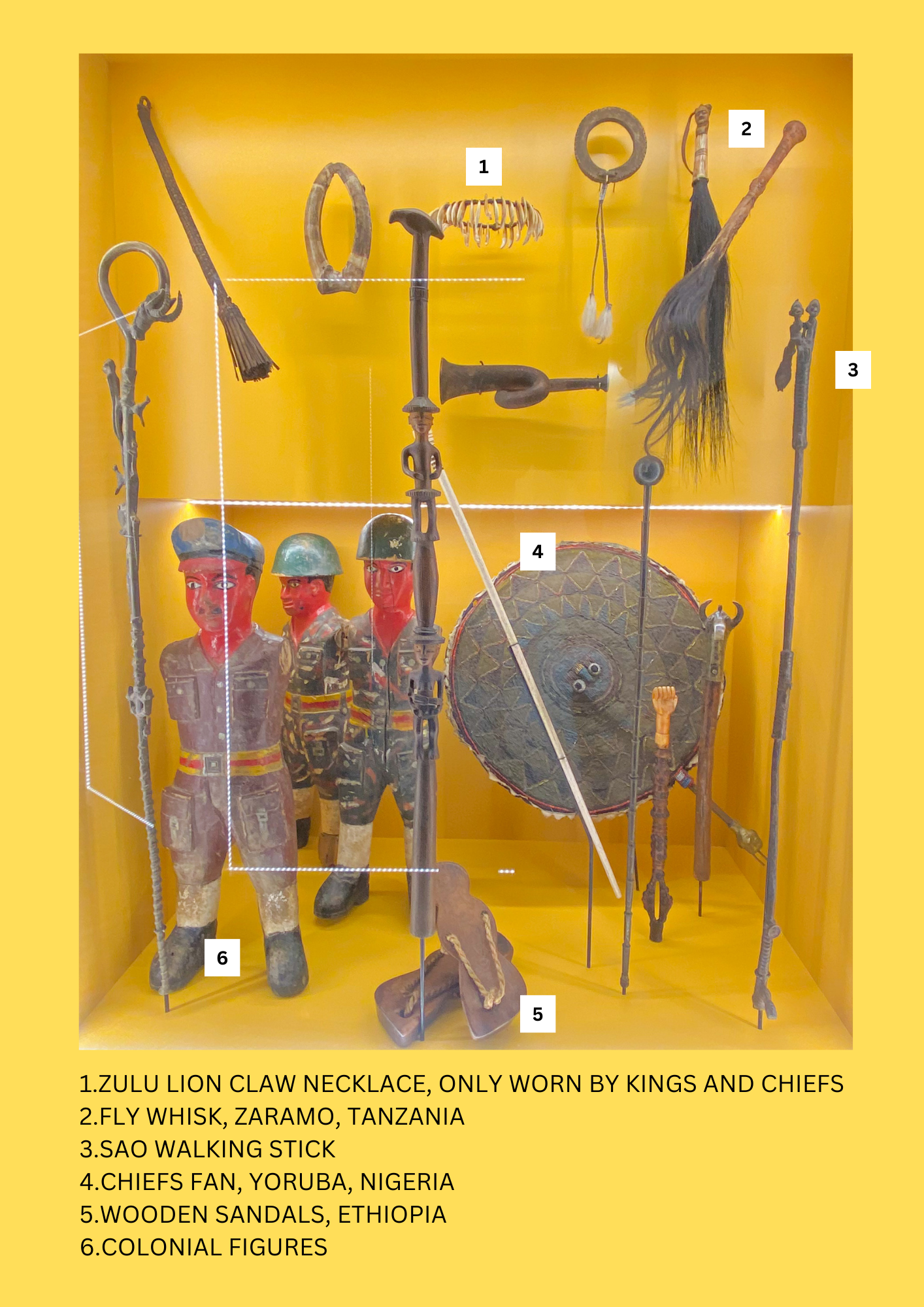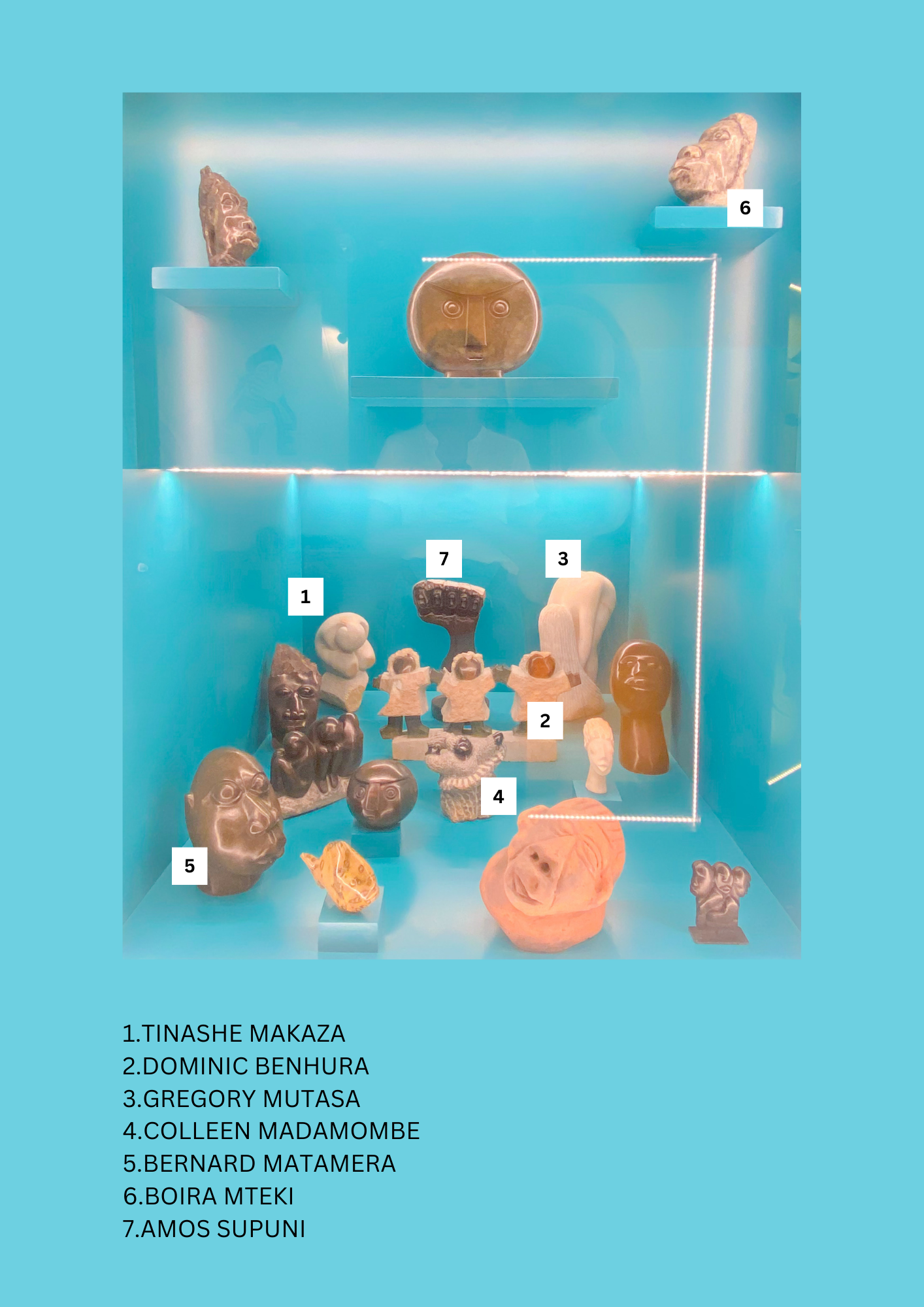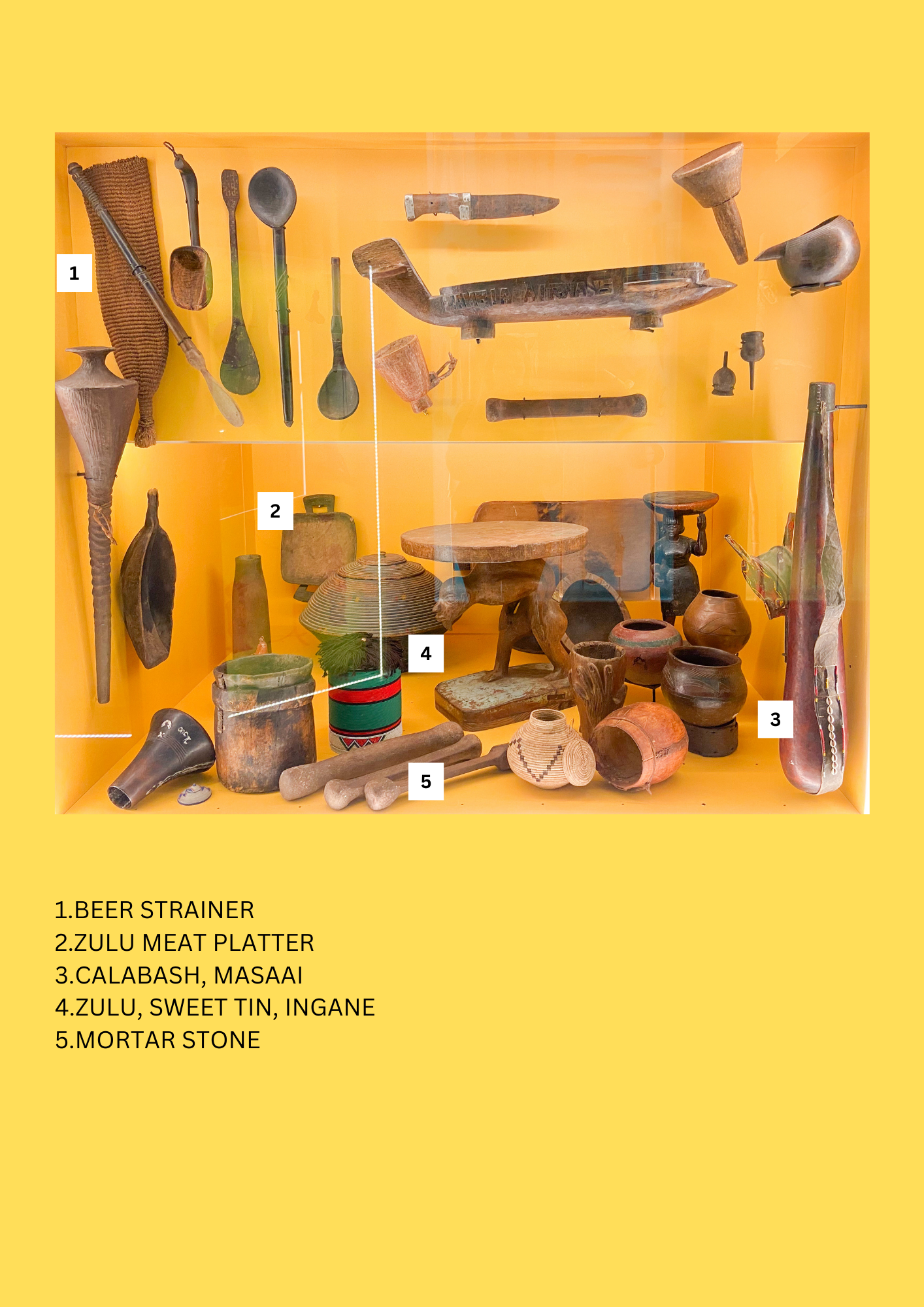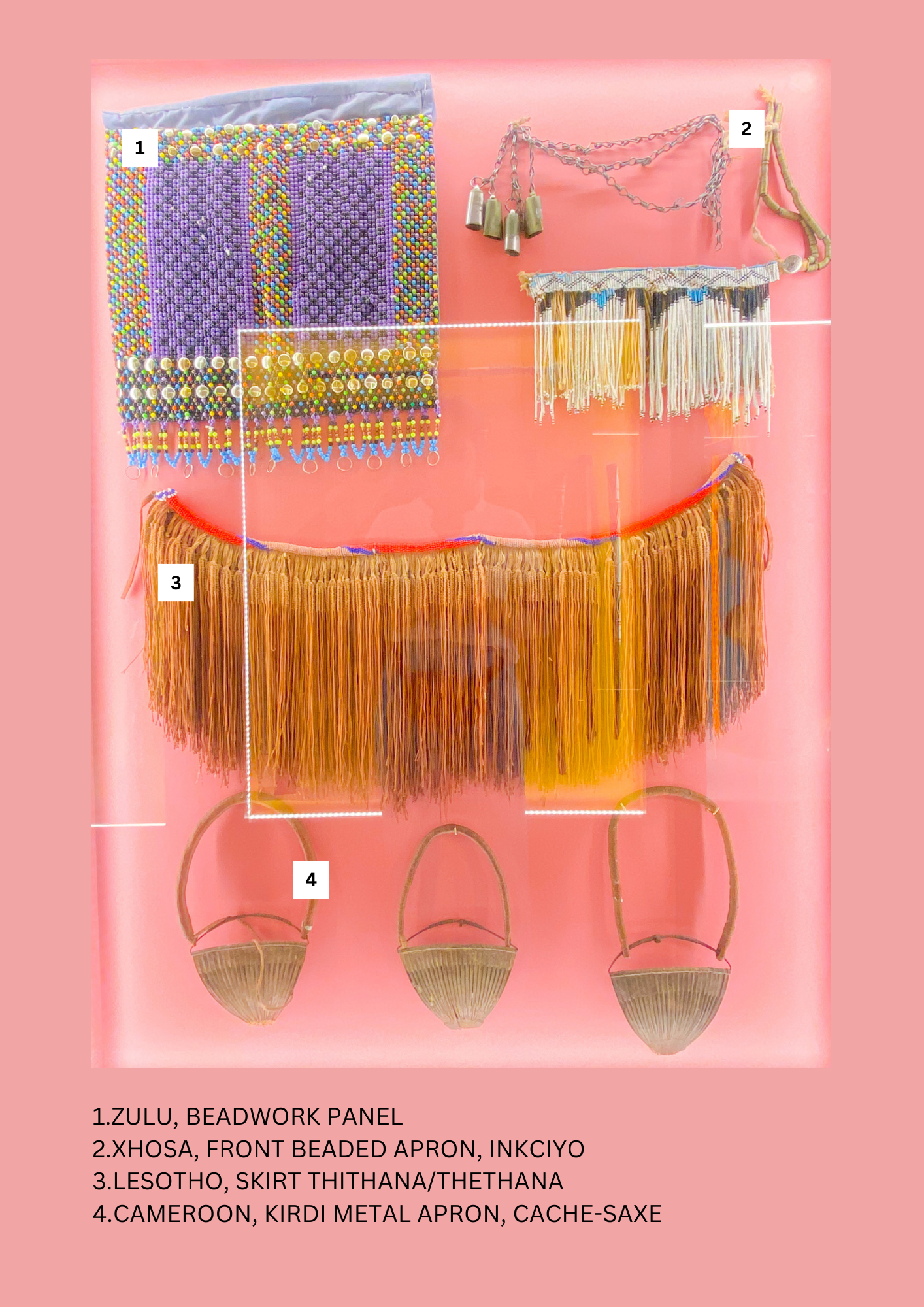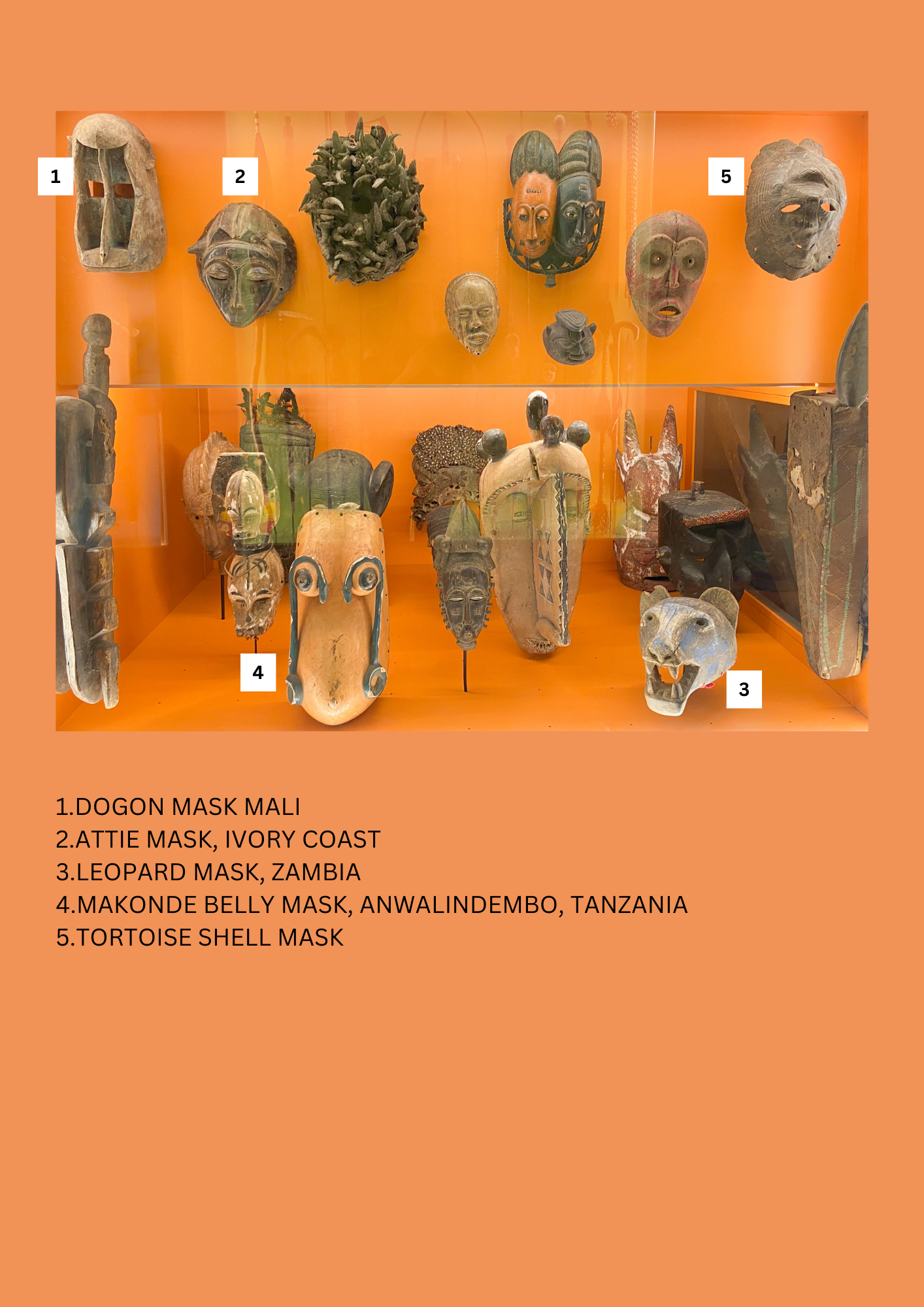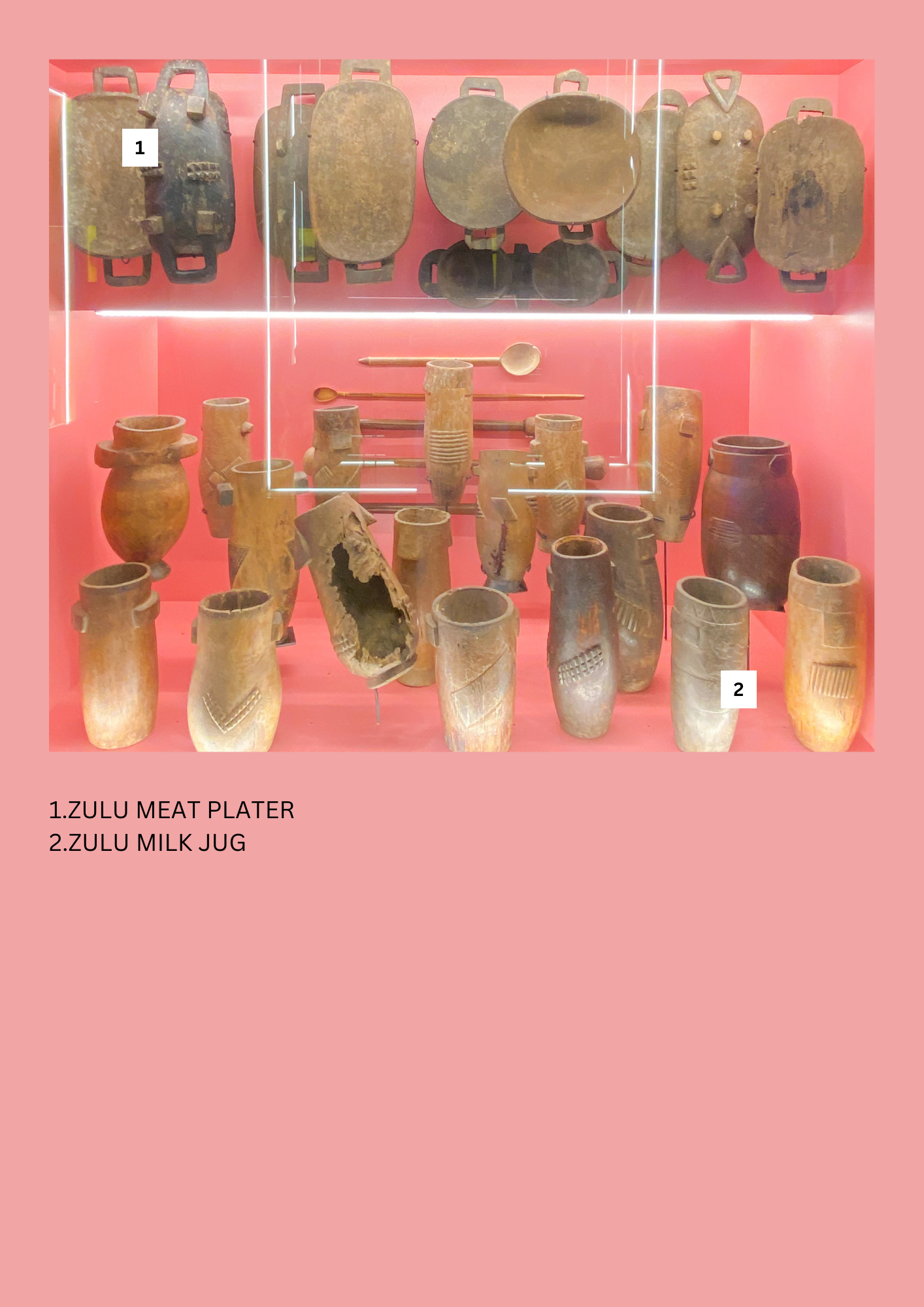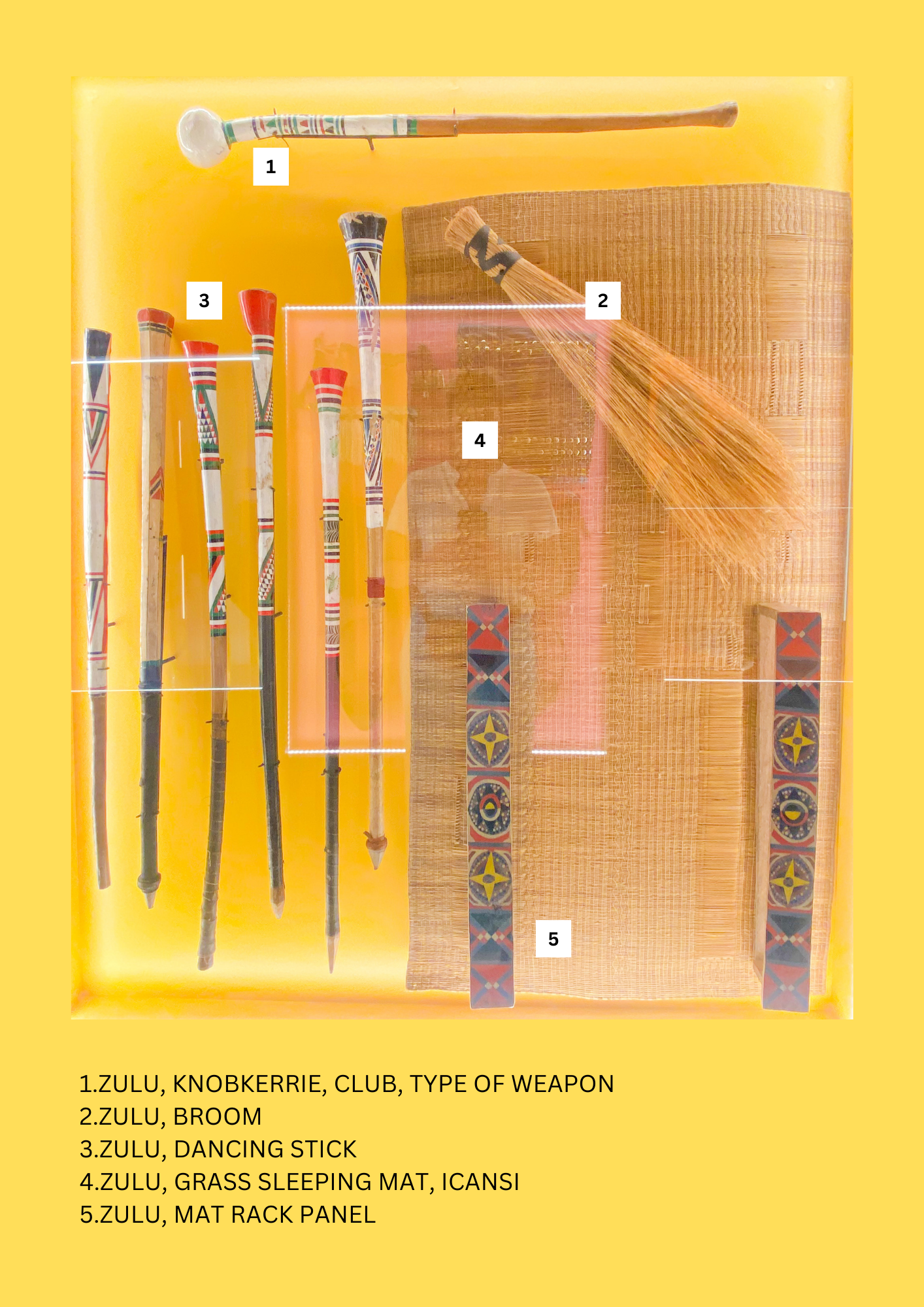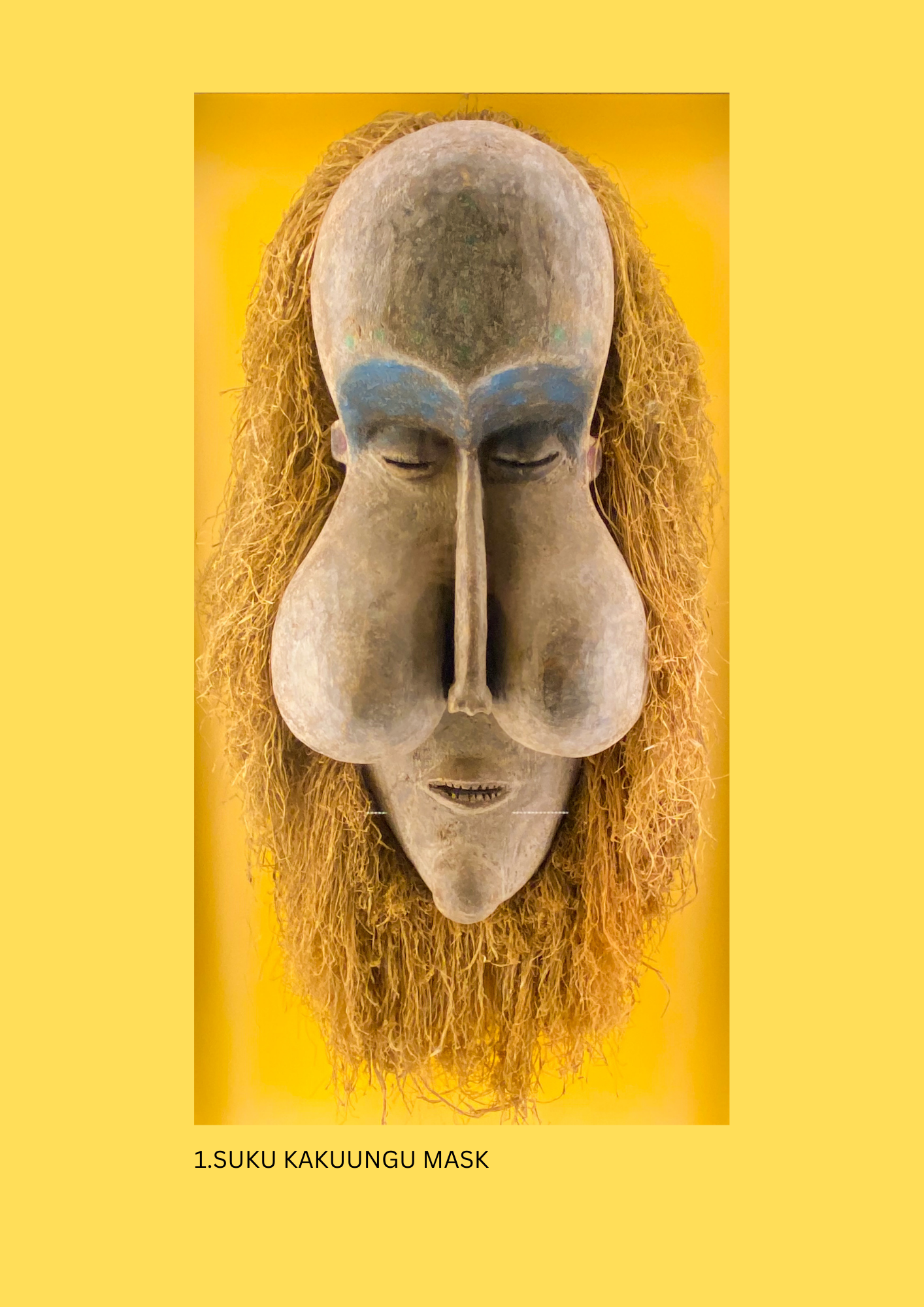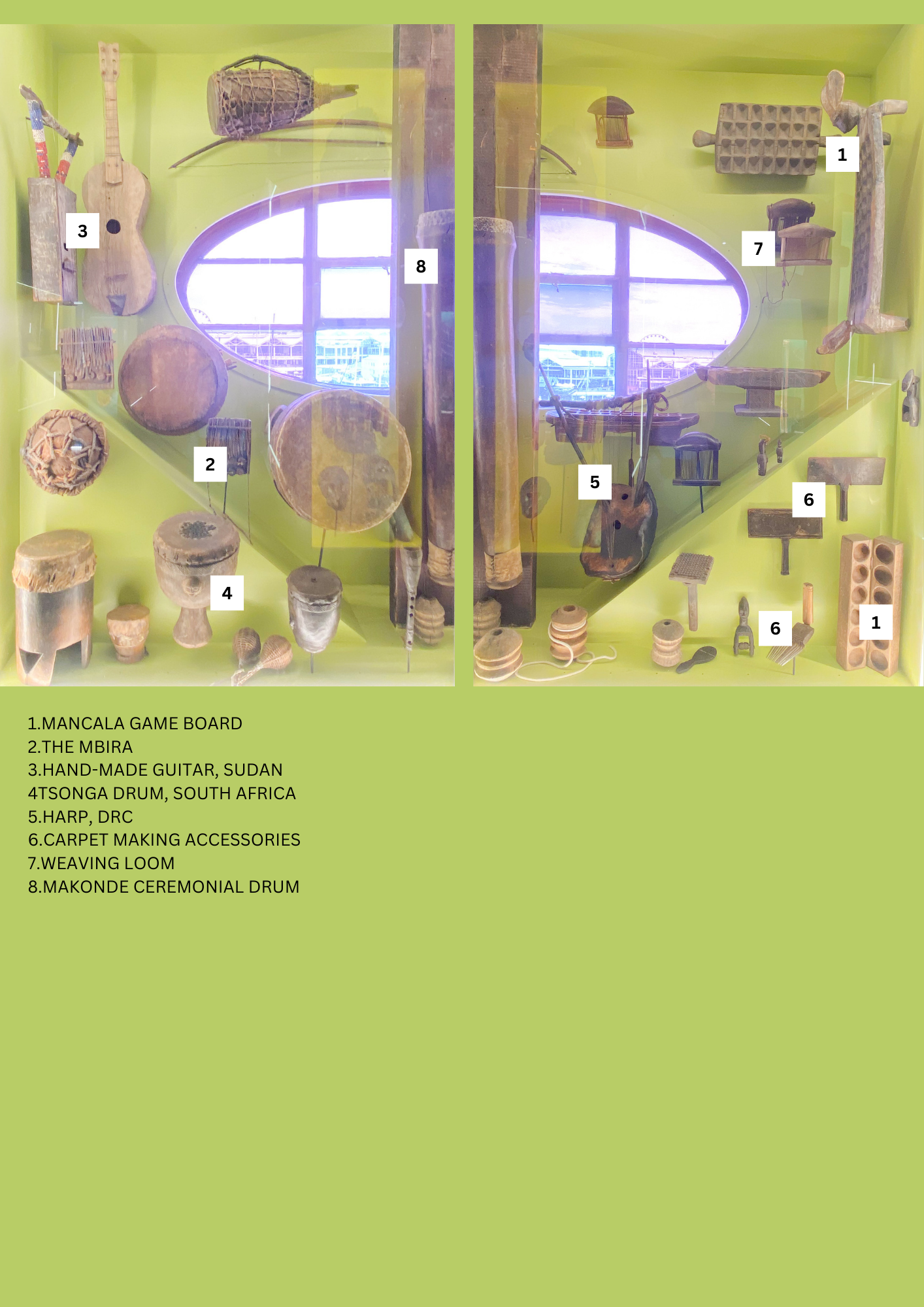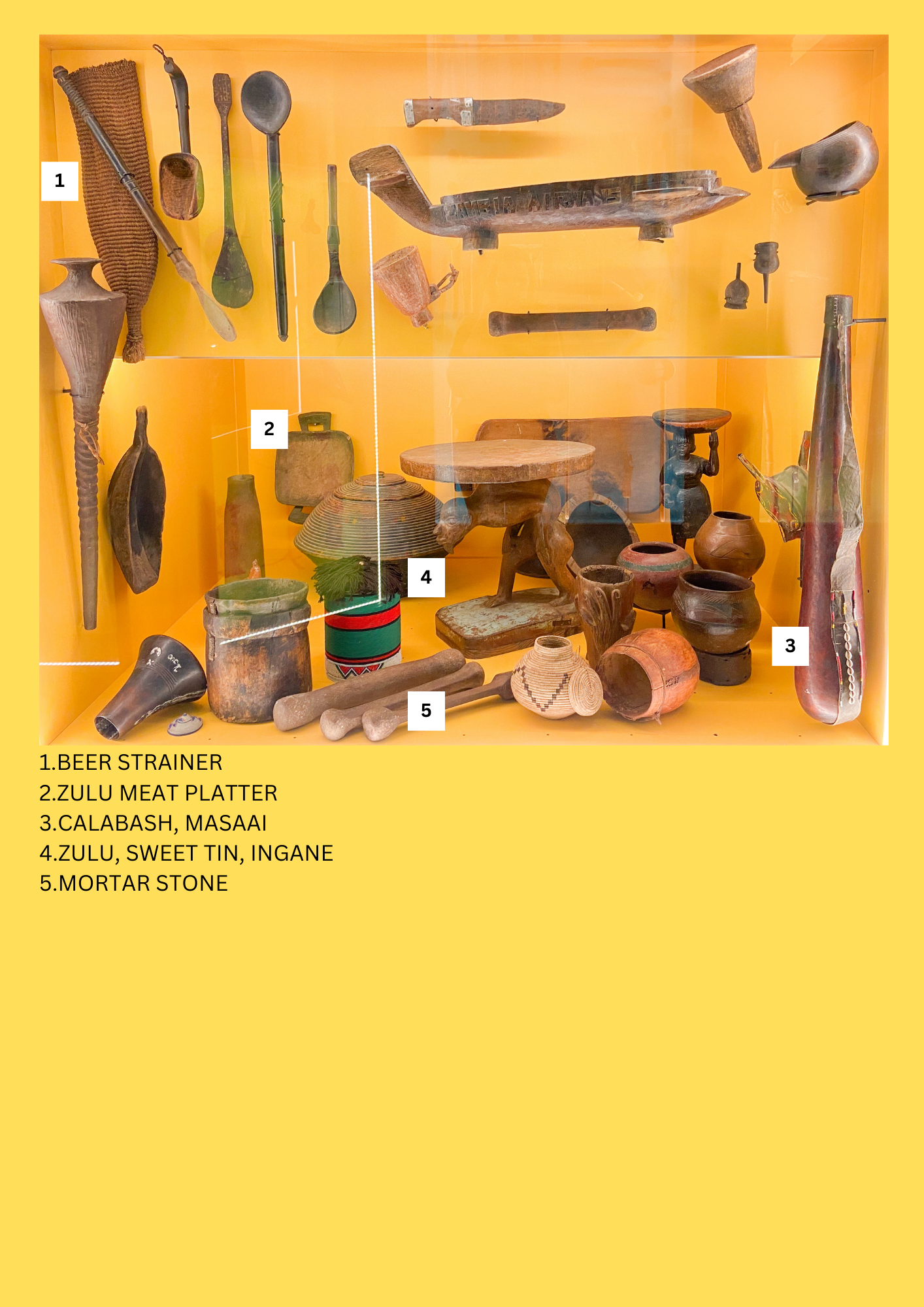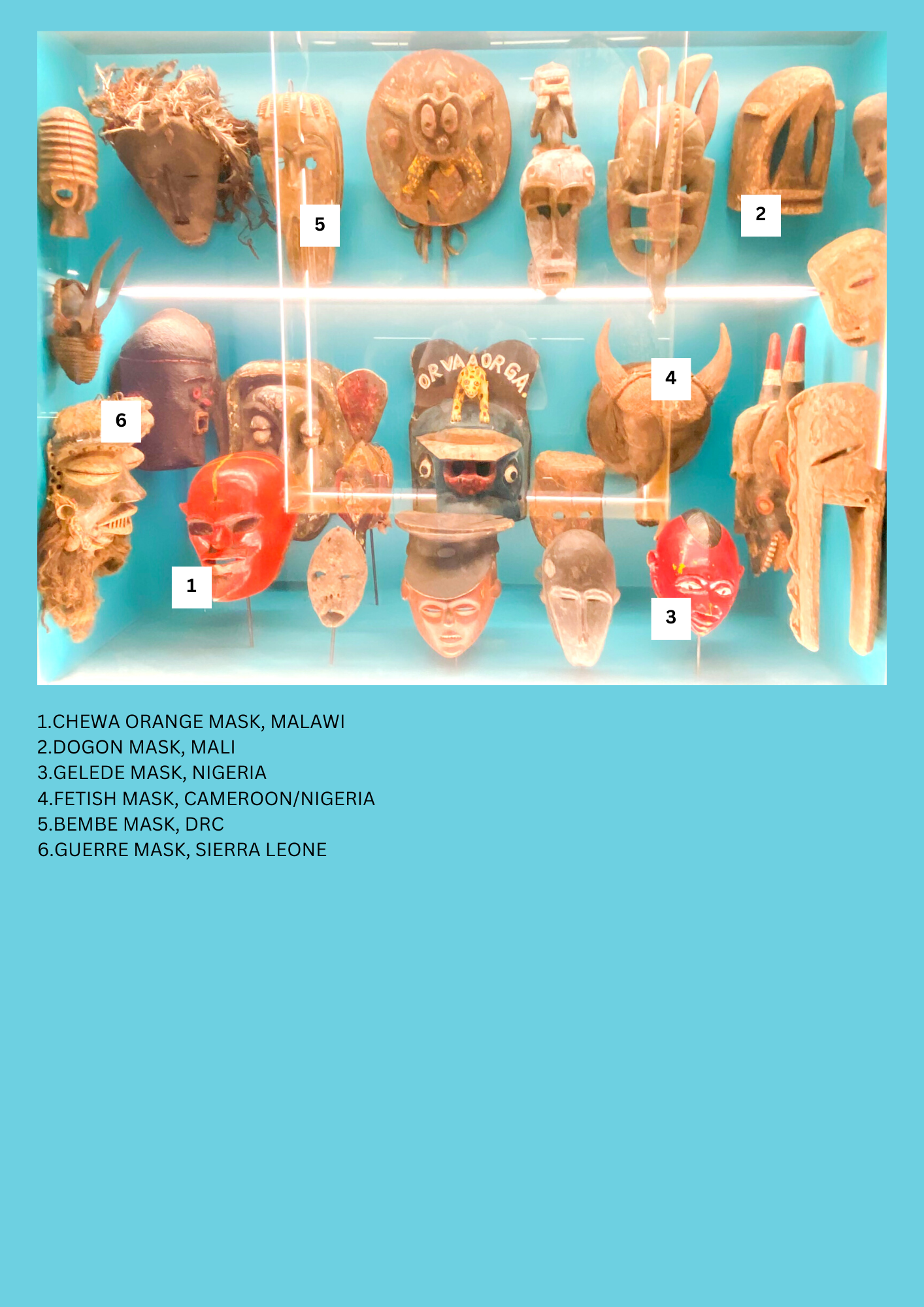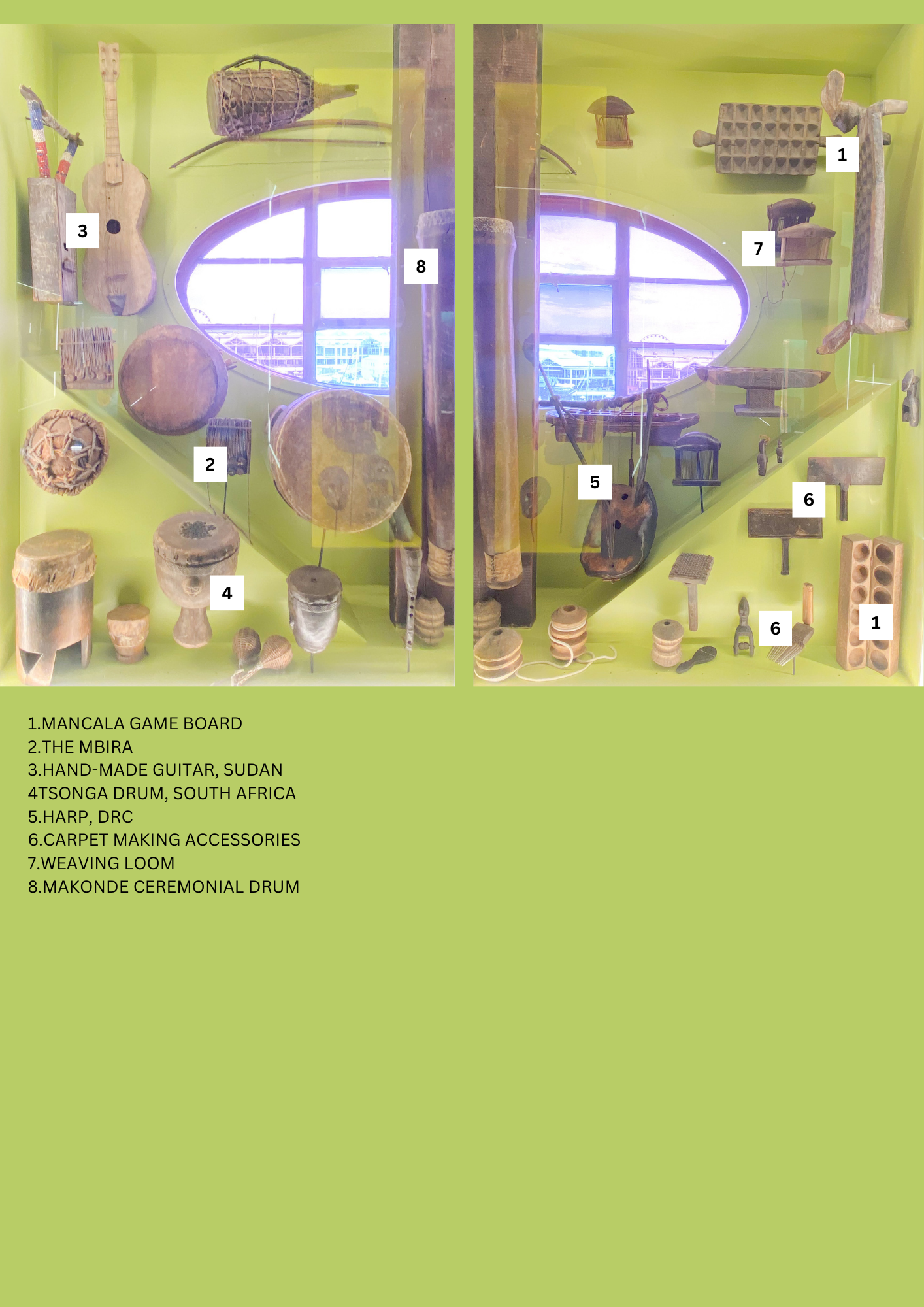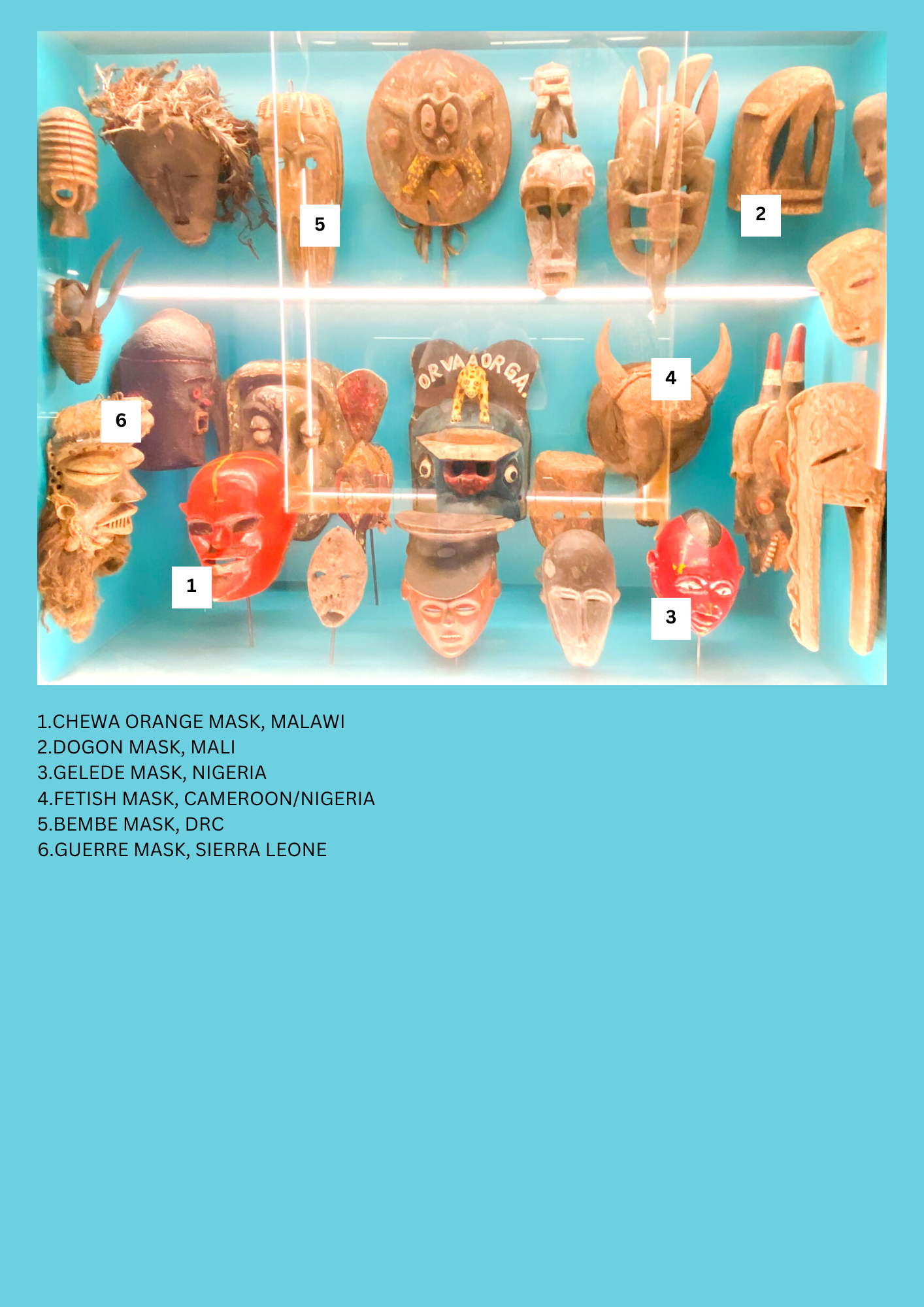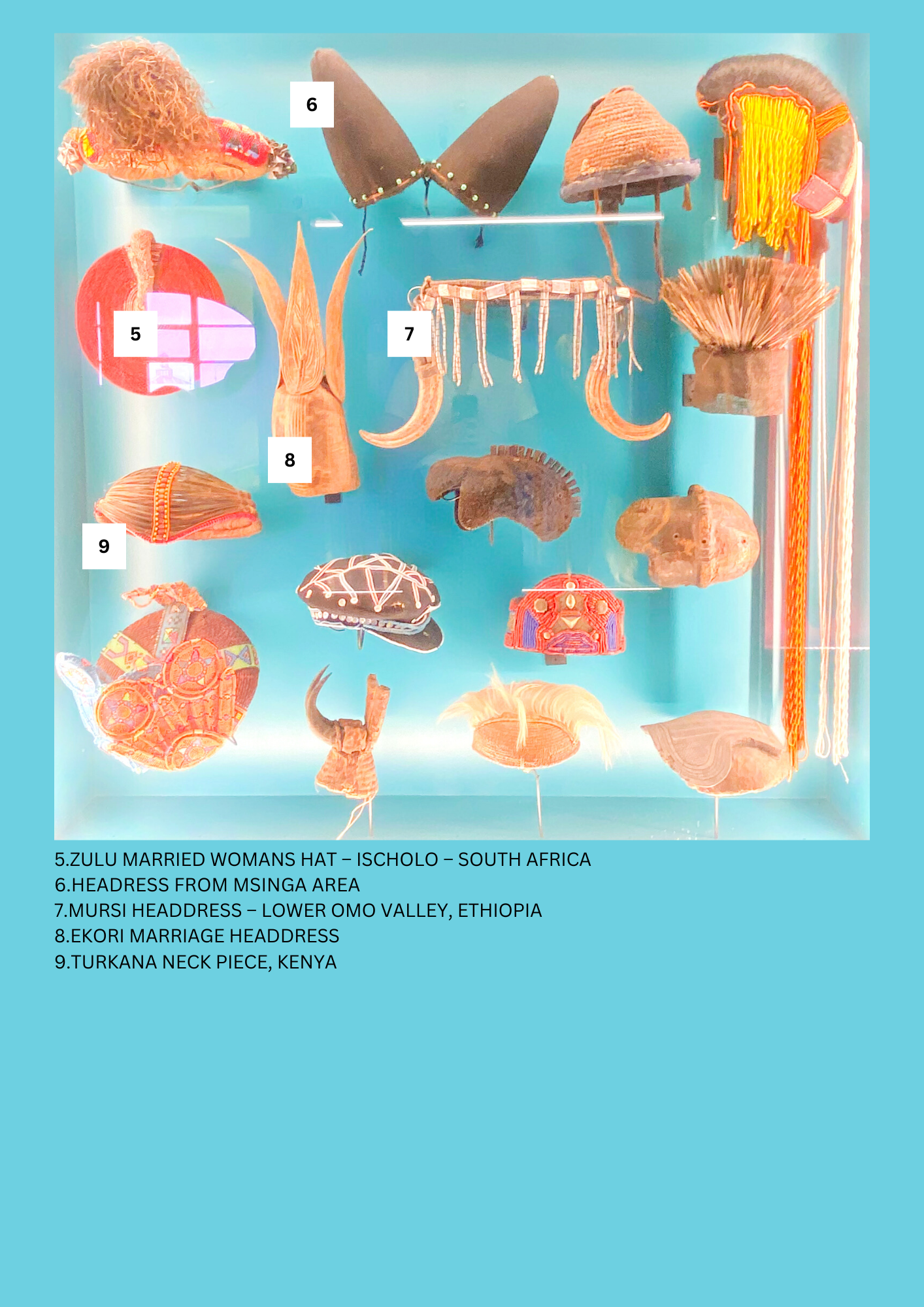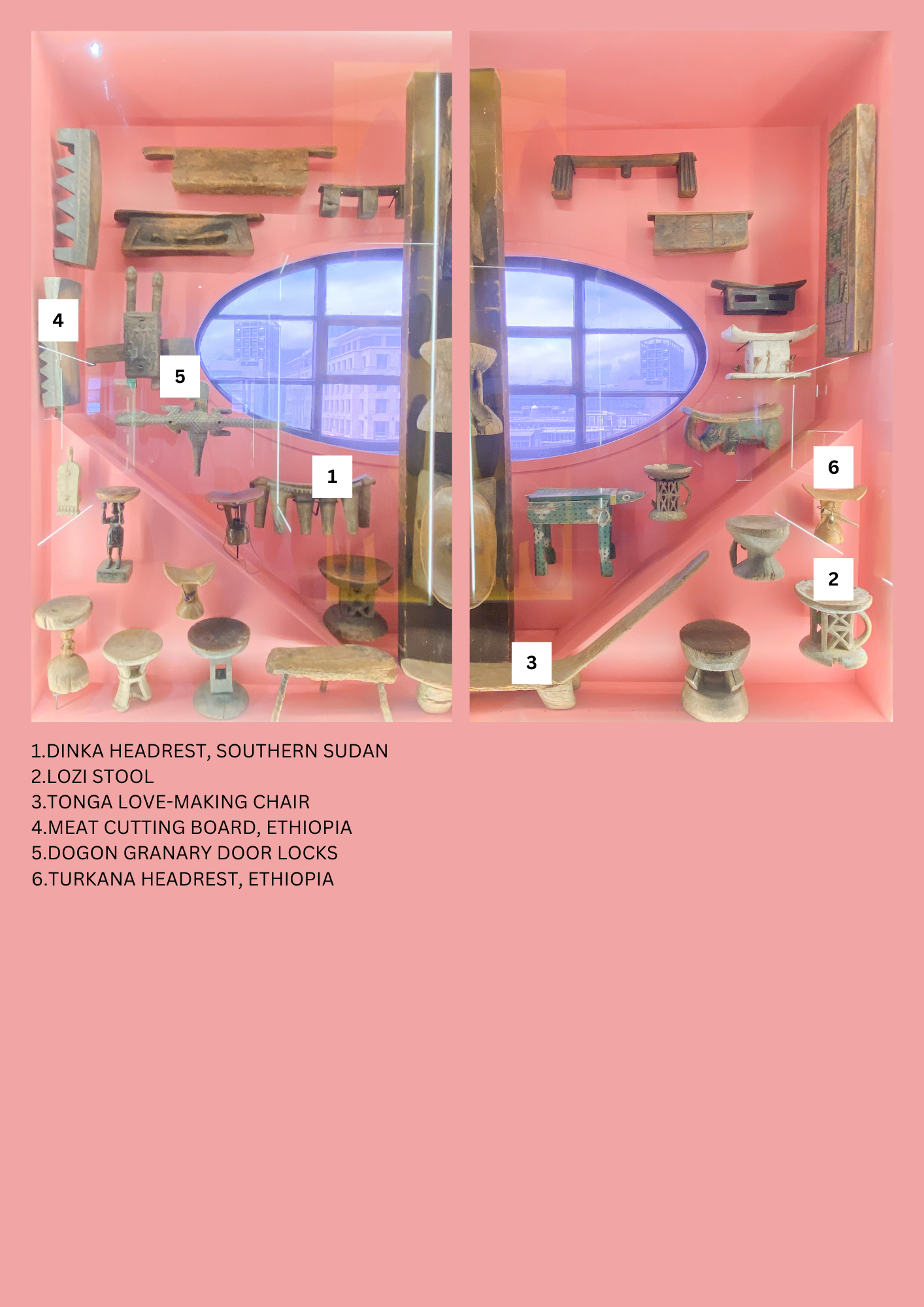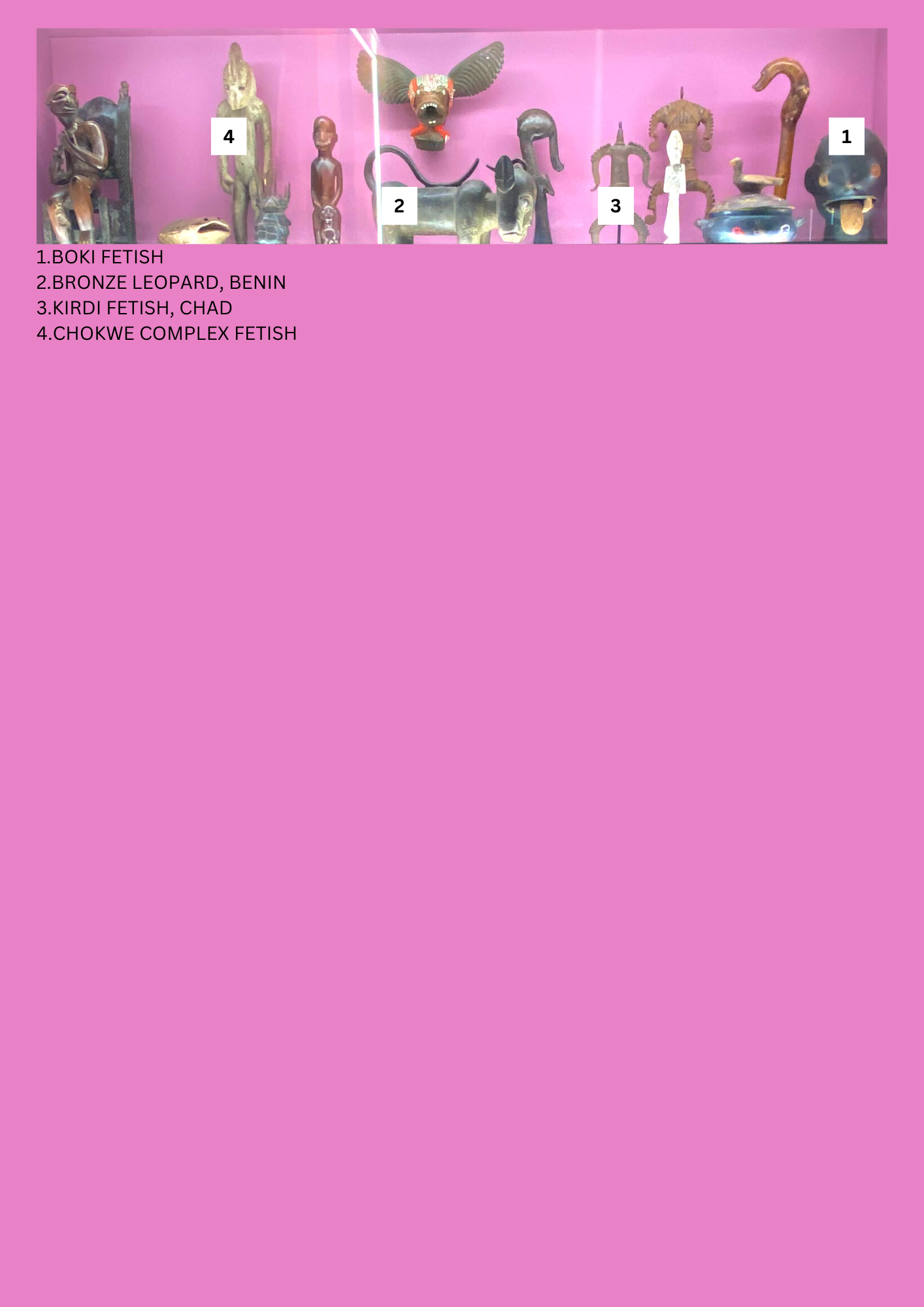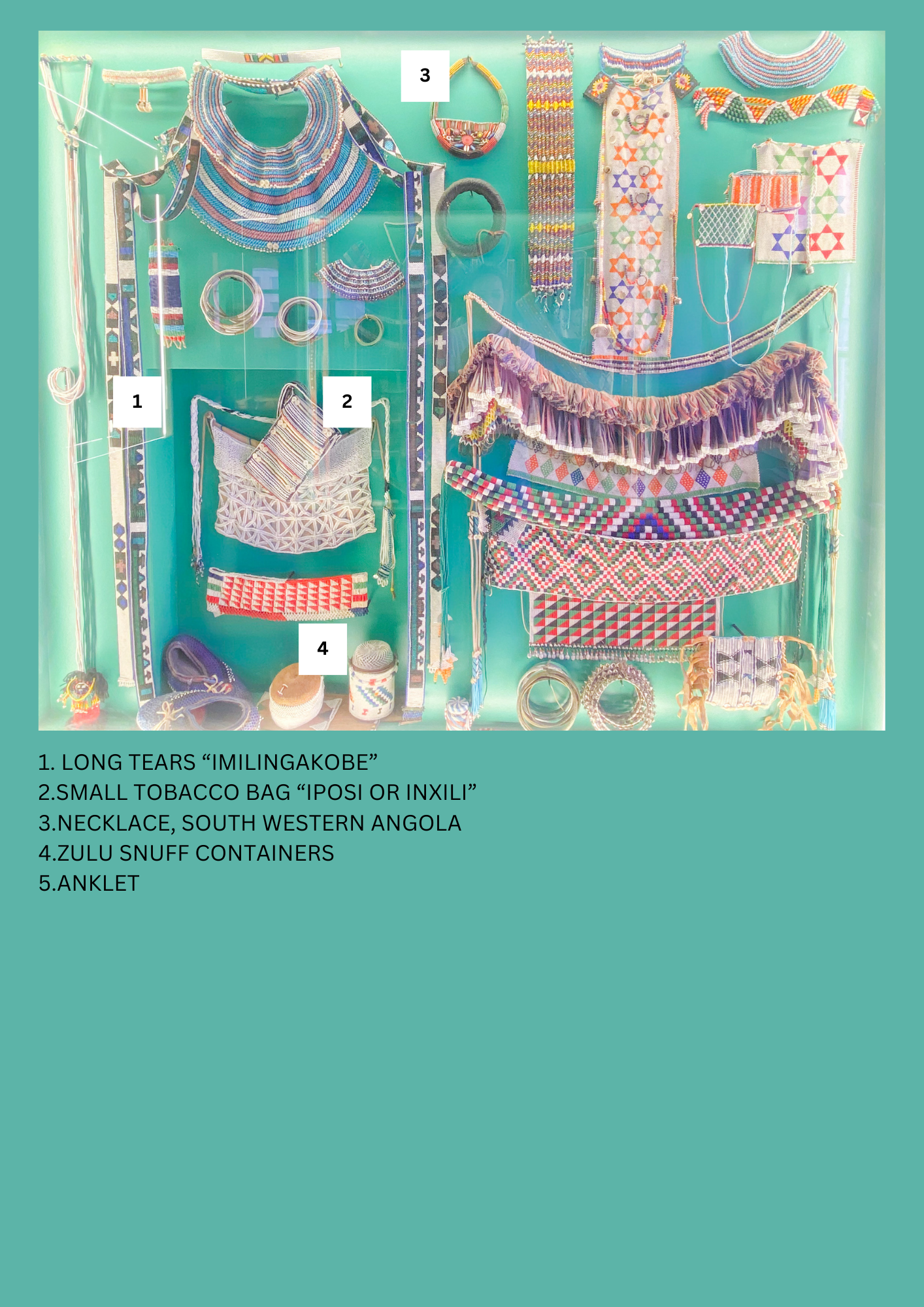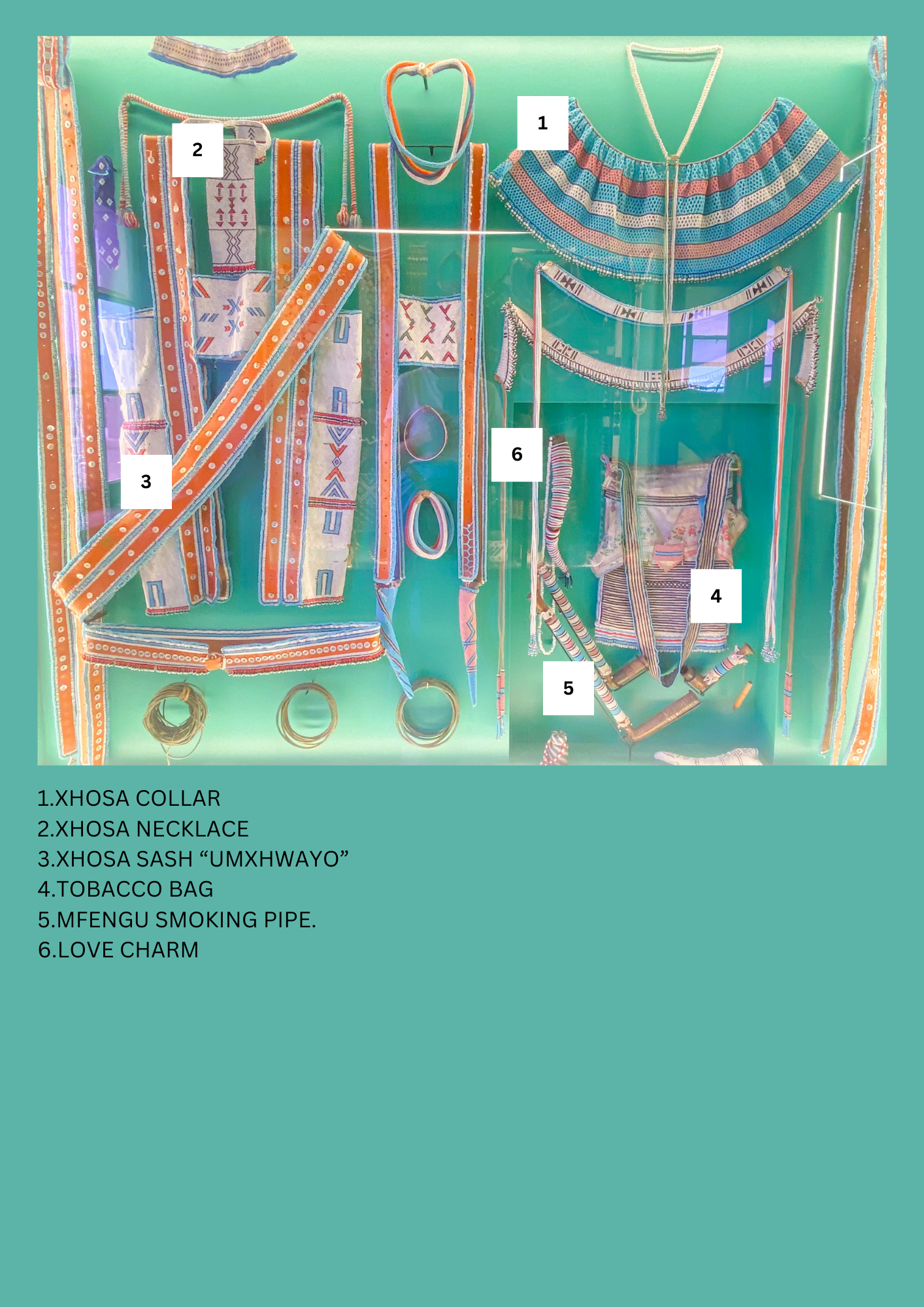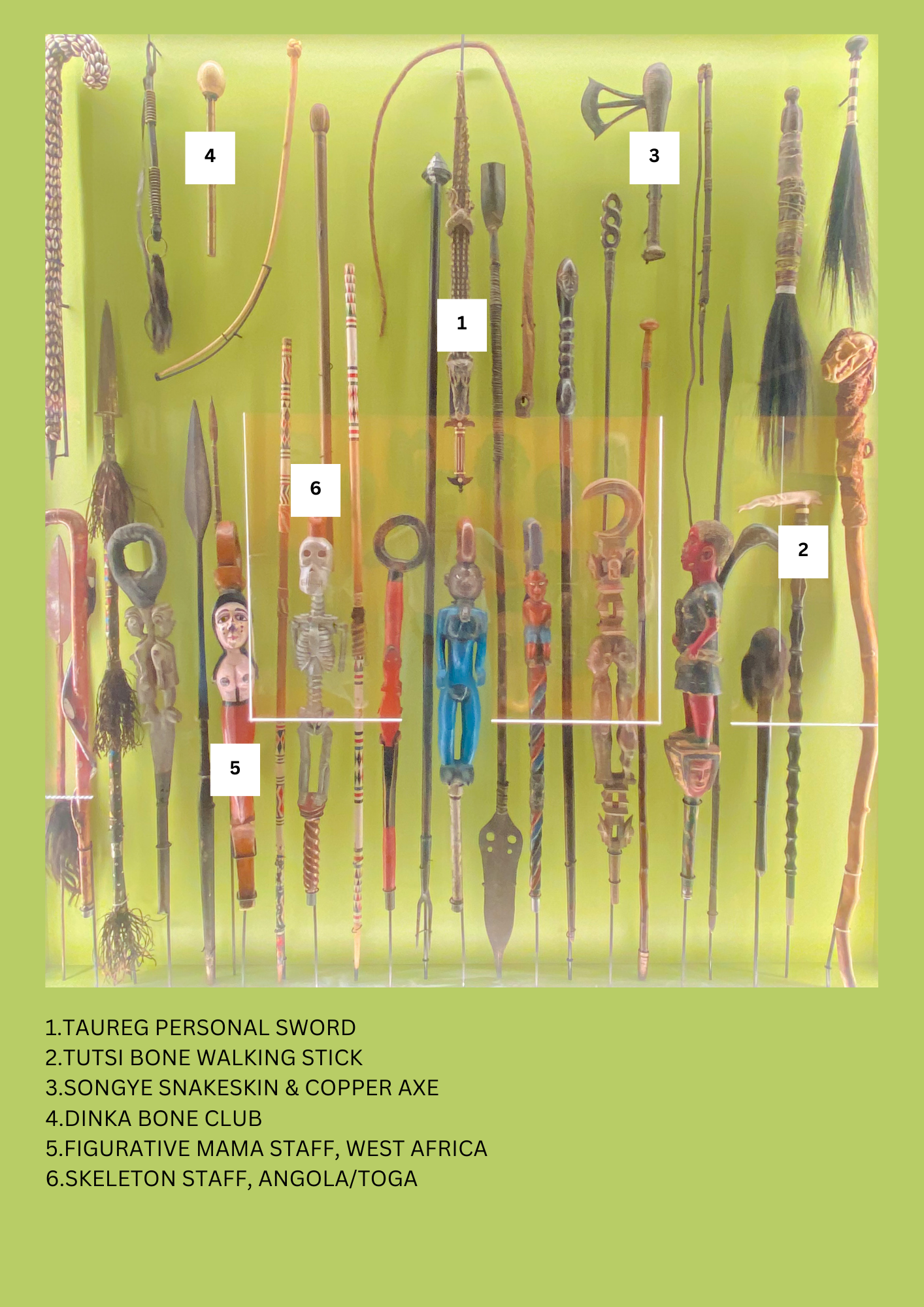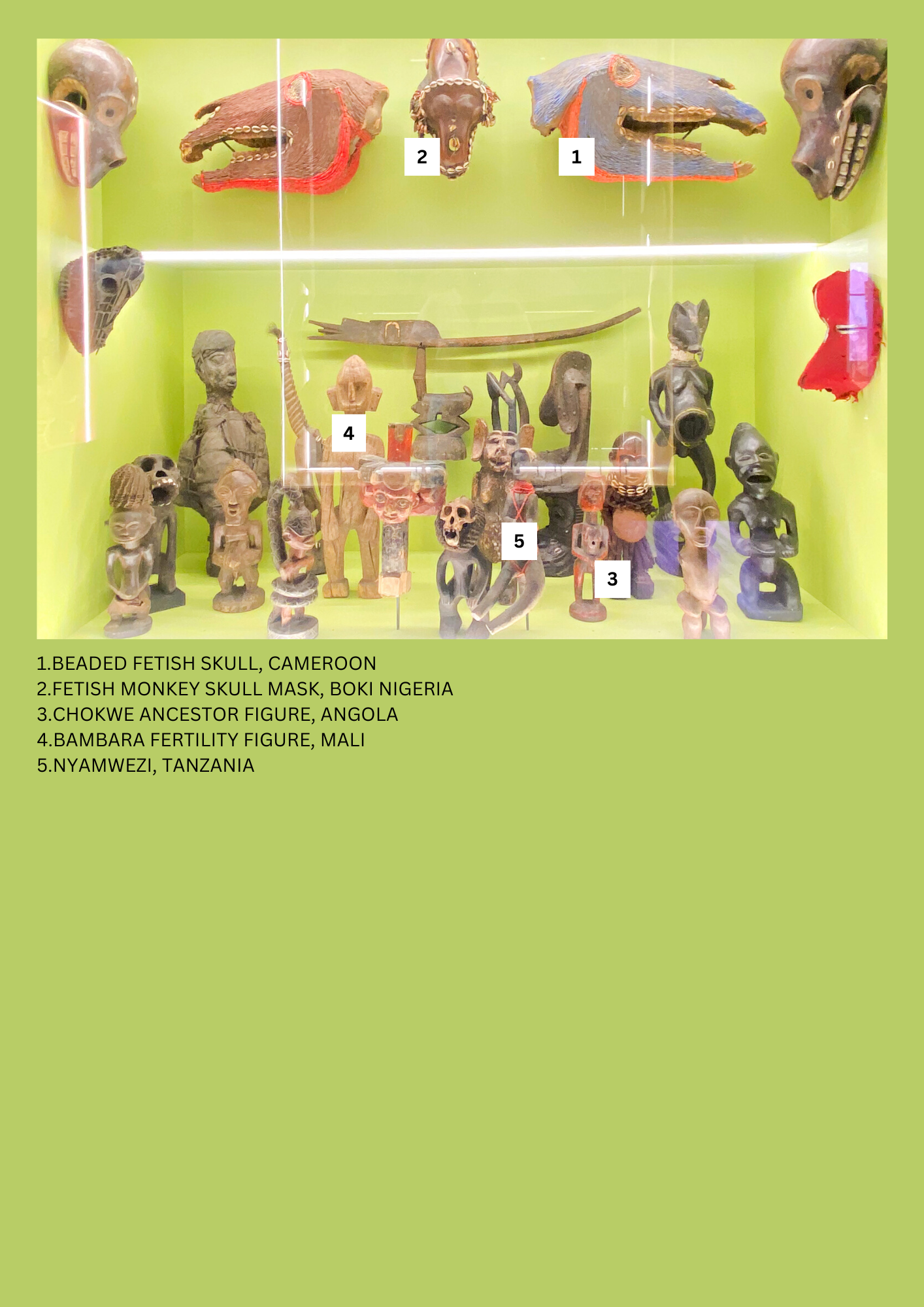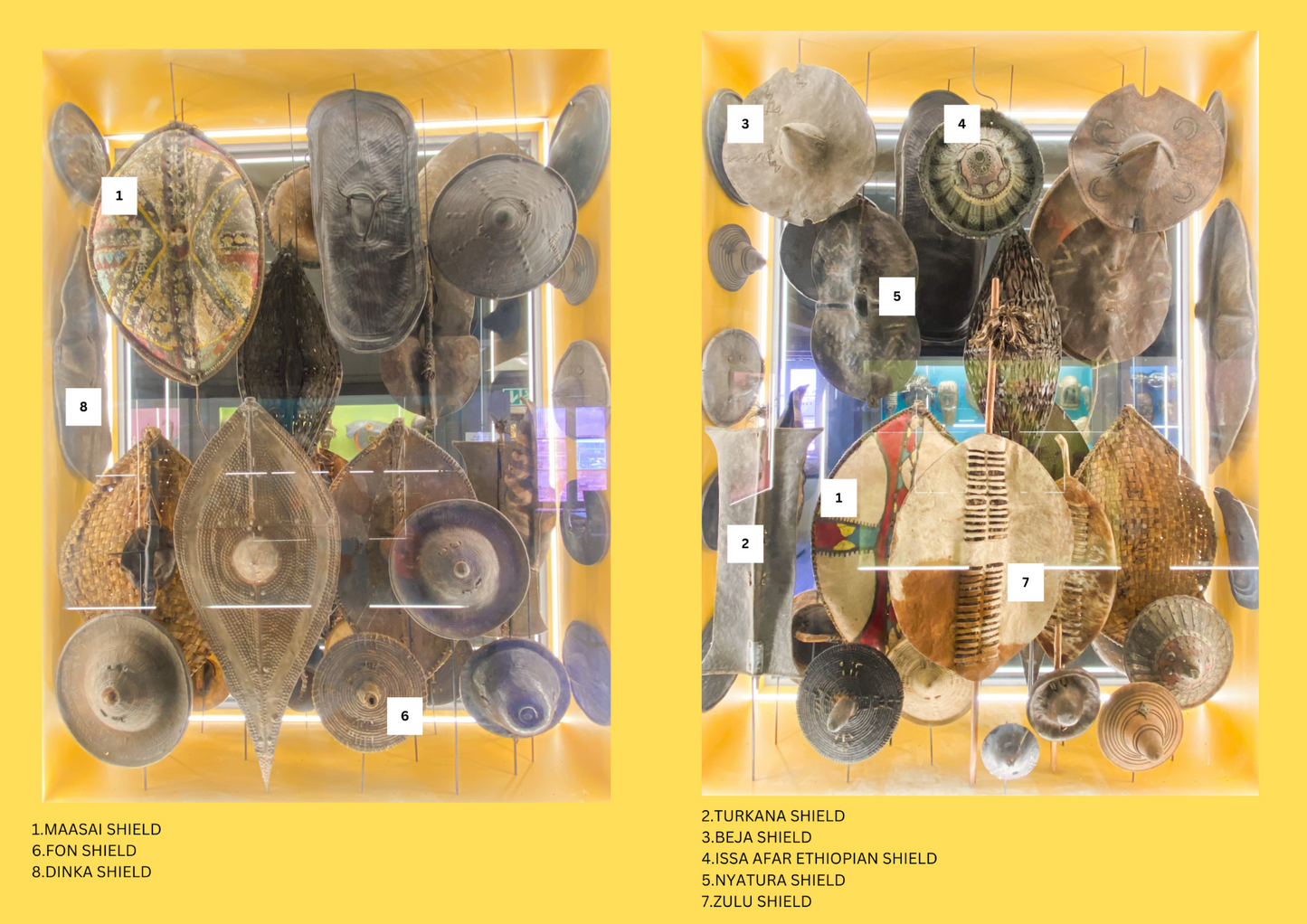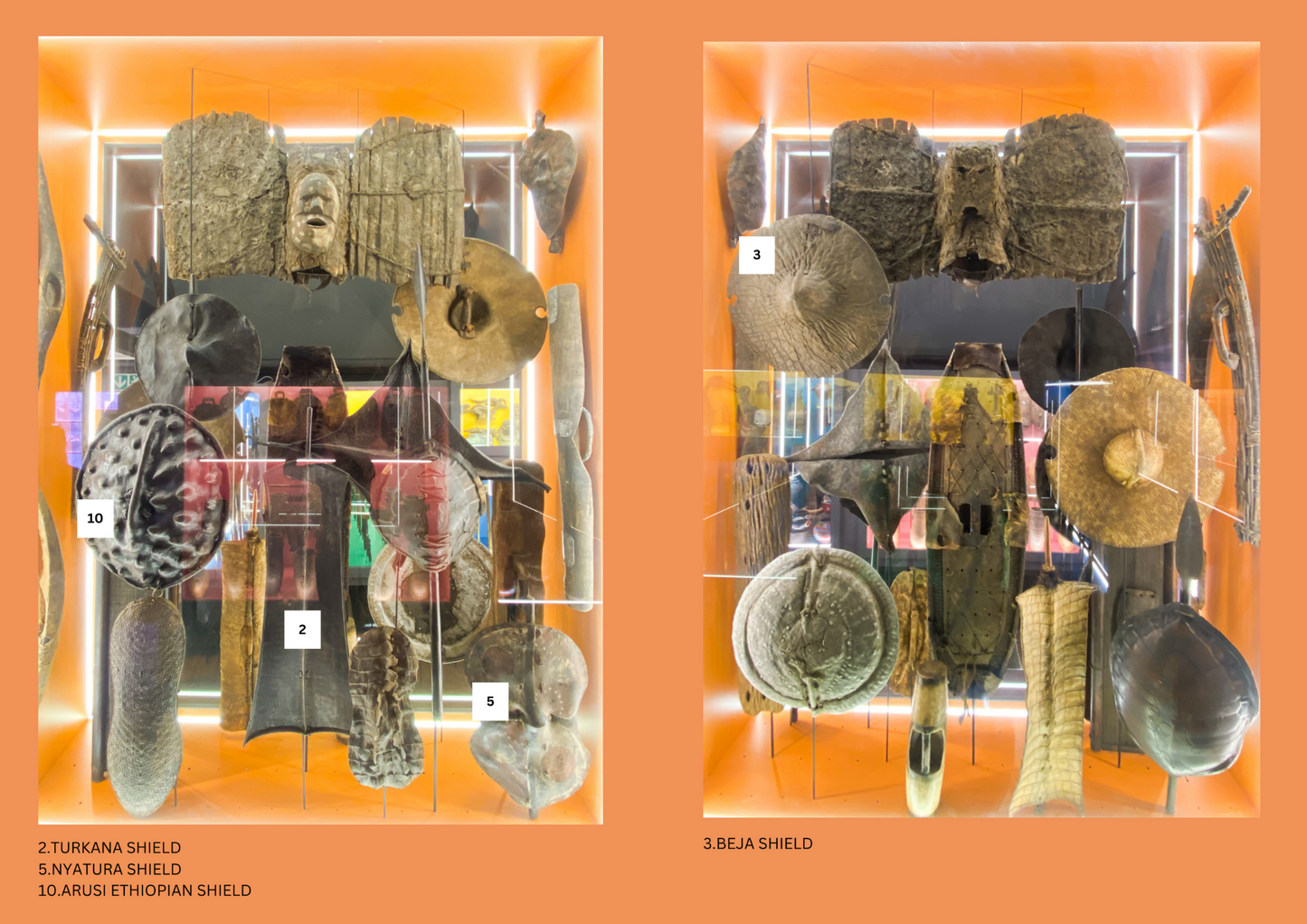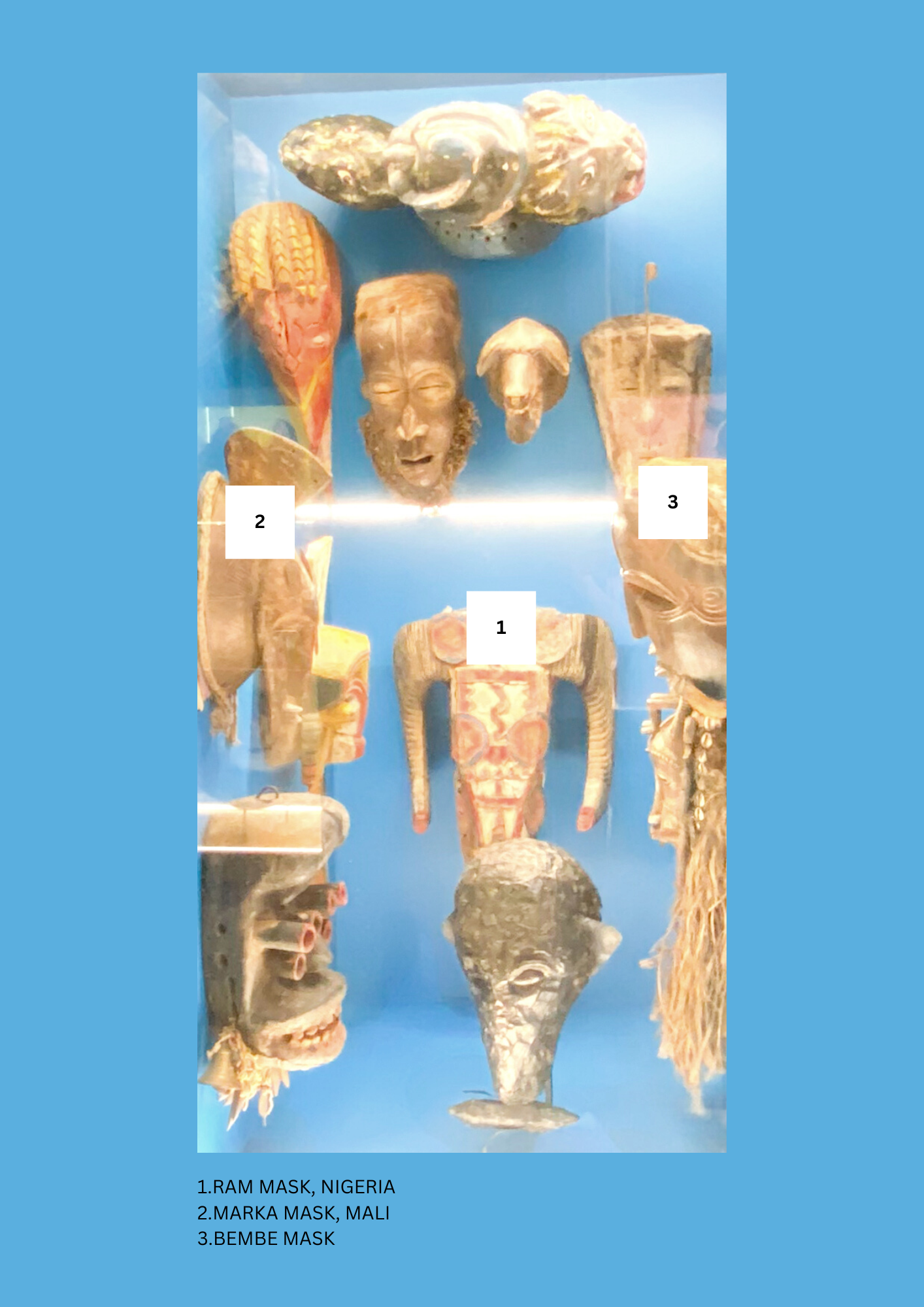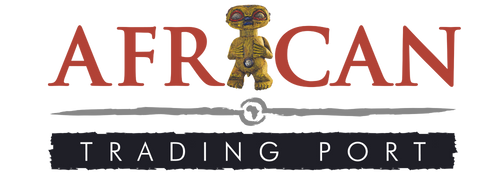African Trading Port
Eye Witness Display
Eye Witness Display
1.Suku Kakuungu Mask Display
1.Suku Kakungu masks are one of the biggest masks in Africa, designed to create fear through exaggerated features like hanging cheeks, massive facial features, and a prominent chin.
2.Stone Display
2.Dominic Benhura is a world-renowned stone sculptor, known for his distinctive style that focuses on children, family, and nature. He has exhibited his work for over thirty years across Africa, America, Asia, and Europe. Dominic was born in 1968 in the Zimbabwean village of Murewa.
3.Gregory Mutasa is a Zimbabwean artist born in 1959. He learned to carve in soapstone and wood at the Kekana Art and Craft school in Rusape and was awarded a Diploma in fine art in 1977. He started carving in Verdite for the tourist trade in 1979 and later began to create his art under the guidance of his brother, Joe Mutasa, a respected artist. Gregory's work has been exhibited in various places including Hannover, Germany; Cape Town, South Africa; and London, England. His work is influenced by women, family, daily life, and the environment, and he is skilled in carving hard stones like Dolomite, Lepidolite, and Springstone.
7.Amos Supuni was born in Malawi in 1970, but his family relocated to Zimbabwe when he was just two months old. By 1989, Supuni was an active member of a Catholic youth group located in Tafara, near Harare. It was here that he received instruction in sculpture from Tapfuma Gutsa. Sadly, Supuni passed away in December of 2008.
3.Zulu Display
1.Knobkerrie is a wooden club with a large knob at one end, mainly used for hunting or as a weapon to strike an enemy's head. It is common in Southern and Eastern Africa. known among Zulu speakers as an isagila.
4.Mask Display
1.Dogon mask, The Dogon people have created over 80 mask types representing characters in their cosmic myths. These masks are used in funeral dances to guide the spirits of the deceased to their resting places in the spirit world.
4.The Makonde Belly Mask is an intriguing piece of art that represents a pregnant woman. During a dance performance, a male dancer wears a full-body mask symbolizing a pregnant stomach and enacts the pains of childbirth. This dance celebrates the initiation of young women into adulthood and ensures the fertility of both fields and women within the community.
5.Chief Display
1.Zulu Lion-claw necklaces were the exclusive property of royalty while the bone imitations were owned and worn by high-ranking individuals of lesser status. Large red glass beads were also reserved for the Nguni elite.
4.Chiefs Fan / Ceremonial Fan, One of the ritual objects associated with the Yoruba goddess, Osun
6.Staff display
1.Taureg personal sword, Takoba (also takuba or takouba) is the sword that is used across the western Sahel and among ethnic groups such as the Tuareg, the Hausa, and the Fulani.
2.Tutsi bone walking stick
3.Songye snakeskin & copper Axe, D.R. Congo
4.Dinka bone club, Dinka people are a Nilotic ethnic group native to South Sudan
5.Figurative mama staff, West Africa
6.Skeleton Staff, Angola/Toga
7.Apron Display
2.Xhosa Inkciyo apron, A beaded apron worn by the Xhosa tribe. It is specifically worn by young girls during their initiation ceremony.
3.The Thithana Skirt of Lesotho: A cultural garment the Thithana skirt of Lesotho is a unique garment made of individually braided fiber strands attached to a waistband. Traditionally, South Sotho girls were dressed in a Thithana skirt at the age of four or five and wore it throughout childhood until they reached puberty.
4.Cache-sexe is a covering for female genitals made from different materials including woven fabric, leather, beads, leaves, and metals. The term is derived from the French word "cacher" which means to hide, and "sexe" which means genitals. Kirdi women in northern Cameroon make them.
8.Utility Display
1.Beer strainer made from a woven grass-like plant fibre tube, which is used to remove the sprouted millet from beer poured from a large ceramic pot vat. The beer flows through the strainer, leaving dregs behind, and the strainer is then wrung out to extract the remaining beer.
3.The calabash, or Enkukuri, is a fruit that has significant cultural and practical value in Maasai culture. It is used for storing milk, carrying beer or water while traveling, and holds spiritual significance for important ceremonies. Additionally, it is a material that is taken from and eventually returned to the land.
9.Headdress display
5.Zulu Married Woman’s Hat – Ischolo – These hats were given as a wedding gift from the man to the woman. The Zulu, also known as Amazulu, are a Bantu ethnic group in Southern Africa.
6.Headress from Msinga area, Worn by a young married woman
7.Mursi Headdress – Lower Omo Valley, Ethiopia with wart hog tusks
8.Ekori Marriage headdress In the Himba tribe, girls wear the ekori headdress until they get married or give birth to a child, which usually takes about a year. Once they get married, the ekori headdress is replaced with erembe, a headdress made from the skin of a goat's head. However, the girl still retains the ekori and wears it only during ceremonies.
10.Figure & Mask Display
1.Beaded fetish skull, A beaded Horse skull used for fetish ceremonies within the Tikar and Bamum people of Cameroon
2.Fetish monkey skull mask, Boki Nigeria
3.Chokwe Ancestor figure, Angola
4.Bambara fertility figure, The Mali Bambara statues are dedicated to the fertility principle known as "gwan." This is why the female features, including breasts, are heavily emphasised. Women who are trying to conceive make offerings at the shrines where these gwan sculptures are located. These statues are kept in shrines and are only brought out during annual ceremonies. The engraved marks on the statues represent scarification patterns that are considered symbols of both prestige and beauty.
5.Nyamwezi Tribe, Tanzania The name Nyamwezi, derived from the Swahili language, means "people from the moon". It is believed to refer to their origin in northwest central Tanzania, given to them by the coastal communities of the country. The Nyamwezi people are known for their slender and graceful physical appearance which is often adorned with leather bands or cloth.
11.Figure Display
1.Boki Fetish
2.Bronze Leopard, Benin
3.Kirdi fetish, Chad
4.Chokwe Complex fetish
12.Sheild Display
2.Turkana Shield narrow shields made of animal hide including Giraffe and Buffalo
3.Beja Shield, The Beja are nomadic people of eastern Sudan who were first documented by the ancient Egyptians. This is a late example of a traditional Beja round shield, typically made of rhinoceros or hippopotamus hide.
5.Nyatura shield, formed from very thick leather skin mounted on a wood staff for support.
10.Arusi Ethiopian Shield, Often made from hippo or rhino hide formed into round shapes, sometimes having decorative bumps worked into the skin while still soft. Ethiopian animal hide shields pounded wet onto wooden forms, dried and removed, are among the most impressive and prized in Africa
13.Shield Display 2
1.Maasai Shield, Shields have always been one of the most important tools of the Maasai warrior. They were used in warfare, hunting, as well as practice and training. Apart from their use in combat, shields were utilised in rites of passage, acting as prestige objects and symbols of identification.
2.Turkana Shield narrow shields made of animal hide including Giraffe and Buffalo
3.Beja Shield, The Beja are nomadic people of eastern Sudan who were first documented by the ancient Egyptians. This is a late example of a traditional Beja round shield, typically made of rhinoceros or hippopotamus hide.
4.Ethiopian Shield, Issa Afar, Army shield, this type of shield functioned as a status symbol for high-rank officers.
5.Nyatura shield, formed from very thick leather skin mounted on a wood staff for support.
6.Fon Shield, Republic of Benin
7.Zulu Shield, A Nguni shield is a traditional, oval-shaped, pointed ox or cowhide shield used by various ethnic groups among the Nguni people of southern Africa.
8.Konso Shield, South Central Ethiopia, The men of Konso used to carry leaf-shaped shields that were supported by wooden poles, which they used for carrying. These shields were tapered to a point on one end and had complex symmetrical patterns of stippled dots and lines embossed on them. To provide additional strength, there was a thick fold along the midrib of the shield. While larger shields were used to defend against attacks, this smaller shield was primarily used during dances.
14.Bead Display
1.Long tears “imilingakobe” worn by Ndebele mothers of male initiates. Worn from the head hanging down on either side.
2.Small tobacco bag “iposi or inxili”, from the Mfengu of Peddie.
3.Necklace, Southwestern Angola
4.Zulu snuff containers called “ishungu”
5.Anklet with leather ties, “umgolombane” Mfengu of Peddie.
15.Bead Display
1.Xhosa collar “ithumbu or ingqosha” worn by young men
2.Xhosa necklace “ilwimiengwe” translated as leopard tongue, worn by young men
3.Xhosa sash “umxhwayo” worn by senior teenage boys before they are initiated into manhood
5.Mfengu smoking pipe, these Xhosa pipes are often referred to as Umabuyakude - implying their length. They are smoked by women as a social activity. The sorter pipes were smoked by men.
16.Mask Display
1.Ram Mask, Nigeria, These masks are danced during annual ceremonies as well as funerals and initiation rites.
2.Marka Mask, Mali
3.Bembe Mask, The traditional masks and headdresses of the eastern Bembe people of the DRC are known for their concave orbits around the bulging "coffee-bean" eyes. The masks have several forms, including the Elanda masks with rounded top and flat bottom, some with bird or animal spirits, and multiple sets of eyes. The Kalunga helmet masks were more abstract and represented bush spirits, with at least two faces and often four to enhance their protective power.
17.Mask Display
1.Chewa orange mask, Malawi, The Chewa people of central and southern Africa, the largest ethnic group in Malawi, are known for their secret societies called Nyau and masks representing deceased spirits or personalities from the community, including Swahili slave traders, British officials, the Virgin Mary, and others with undesirable values. Unlike West African masks, Nyau faces often resemble someone.
2.Dogon mask, Mali, The Dogon people have created over 80 mask types that represent characters in their cosmic myths. These masks are used in funeral dances to guide the spirits of the deceased to their resting places in the spirit world.
3.Gelede Mask, Nigeria, Originating from the Yoruba people, the Gelede mask embodies tradition and cultural expression. It is situated along the borders of southwestern Nigeria and present-day Benin (Dahomey).
4.Fetish mask, Cameroon/Nigeria
5.Bembe Mask, DRC
6.Guerre Mask, Sierra Leone, The helmet or sowei mask is a traditional symbol of the Mende people of Sierra Leone, West Africa, and it is used in initiation ceremonies. The Mende culture uses the helmet mask to invoke the protection of the guardian spirits known as Sowo by important figures of Sande, which is the women's wing of the Mende people. The mask's characteristic hairstyle represents beauty, wealth, and health in Mende culture.
18.Instrument Display
1.Mancala Game Board
2.The Mbira
3.Hand-made guitar, Sudan
4.Tsonga Drum, South Africa
5.Harp, DRC
6.Carpet making accessories
7.Weaving loom
8.Makonde Ceremonial Drum
19.Stool Display
1.Dinka Headrest, Southern Sudan
2.Lozi Stool
3.Tonga love-making chair
4.Meat Cutting board, Ethiopia
5.Dogon granary door locks
6.Turkana Headrest, Ethiopia
20.Zulu Jug Display
1.Meat platters are still commonly commissioned by rural Zulu-speaking communities for use on important ceremonial occasions such as weddings, celebrations to honour the ancestors and funerals.
2.Carved milk pails were widely used in rural South Africa, typically made from cylindrical logs with handles or lugs near the rim. They often had slightly swelling bellies but no legs.
Share

